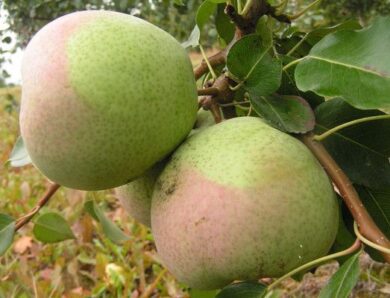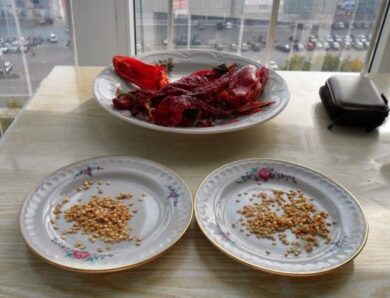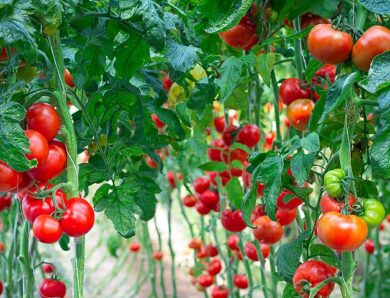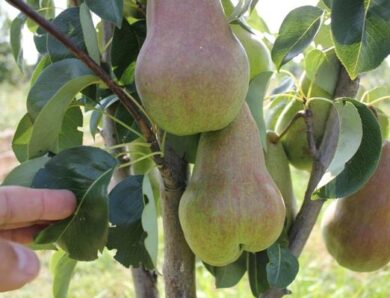Black pepper peas: як виростити у себе на ділянці
Чорний перець прийнято називати малабарийской ягодою. Це рослина в природних умовах є деревоподібної ліаною довжиною 6 meters, яка обвиває дерева. Вирощування перцю займаються на плантаціях Шрі-Ланки, Яви, Борнео, Суматри, Бразилії. З кожного виду дерева отримують чорний, білий і зелений перець. У нашій країні ароматний чорний перець традиційно застосовується в якості приправи для супів, маринадів, meat, ковбасних виробів. Запашний перець при величезному бажанні реально виростити у себе на дачі або будинку. Як отримати з насіння, розсаду, перемістити її в окремі горщики, створити належні умови, read in our article.
Складності вирощування
Які ж труднощі можуть підстерігати тих, хто зважиться вирощувати духмяний перець в домашніх умовах? Якщо ваша рослина виглядає витягнутим і оголеним, то причинами такого явища здатні стати нестача корисних елементів і мала кількість природного освітлення. Якщо кінчики листя, які має чорний перець, придбали коричневий відтінок, це свідчить про недостатню ступеня вологості субстрату і повітря. Взимку при вирощуванні перцю для нього небезпечно пожовтіння листя, що спостерігається при підвищеній вологості. Підсумком може стати поява хлорозу в ґрунті. Якщо улюблена культура в домашніх умовах стала засихати, can be assumed, що має місце надлишок світла. Якщо розмістити горщик з рослиною під прямими сонячними променями, результатом стане блідість зелені.
Якщо в процесі вирощування на тильній стороні листа ви виявите білі іскринки, не лякайтеся. Скоро вони придбають чорний колір, а наявність таких утворень є особливістю культури, і це цілком нормально.
Вирощування розсади
Запашний перець можна розмножити декількома способами: using seeds, відсадків, живцями або поділом.
Щоб отримати якісну розсаду, достатньо придбати перець горошком в магазині. Для посадки насіння найкраще підійде червень, оскільки оптимальна температура для культури становить 25 – 28 degrees of heat. Передпосівна підготовка передбачає калібрування. Після відбору найбільш великих горошин їх слід замочити на добу, потім посадити в горщик. До посадки горошок обов’язково обдають окропом, після чого він готовий до закладання в грунт. Для посіву знадобиться грунт, у якому присутній 1 частина піску і половина частини дернової землі.
Перші тендітні паростки розсади реально отримати через 1 moon. Коли паростки стануть повноцінним кущем, проводиться пікіровка розсади на відстані кілька см один від одного. Для розсадження використовуються горщики, що мають діаметр 7 – 8 div. При пікіровці чорний перець слід пересаджувати акуратно, оскільки він володіє крихкими корінням.
Вносити підживлення радять тоді, коли на розсаді з’явиться другий листочок. В якості добрива відмінно зарекомендував себе курячий послід, який попередньо розводять водою і витримують кілька днів. Співвідношення його з рідиною складає 1:10. As an option, припустимо скористатися готовою підгодівлею, призначеної для листяних культур.
Коли коріння рослини розростуться, а зазвичай це відбувається через тиждень, багато пересаджують його в горщик більшого розміру. Не слід забувати, що улюбленець росте в дикій природі як ліани, що обвиває дерева, тому в домашніх умовах йому знадобиться надійна опора.
З горошин чорного кольору реально отримати білий перець, якщо на тиждень помістити його у воду, після чого зняти шкірку і просушити. Зелені перчинки виходять з недостиглих горошин. Для вирощування використовуються тільки плоди чорного кольору. З рожевих, білих або зелених горошин отримати рослина не вдасться. Культура зарубіжних порід не потребує пікіровці, але росте лише один сезон.
Пересадка в горщики і догляд
Запашний перець після пересадки в окремі ємності вимагає повноцінного догляду. Для нього потрібно розсіяне освітлення. Краще всього розмістити горщики на підвіконнях, які розташовані зі східної або західної сторони. Якщо горщик розташований на південній стороні, потрібно обов’язково створити для нього тінь. За умови знаходження на північному вікні рослина може страждати від нестачі нормальної кількості освітлення.
Коли чорний перець вступає в період активної вегетації, йому потрібний температурний режим від 20 to 25 degrees of heat. В осінній період допустимо незначне зниження показників. Взимку температура не повинна опускатися нижче 18, у виняткових випадках – не нижче 16 degrees.
Полив у весняно-осінній час здійснюють рясний. Використовується відстояна м’яка вода. Перед кожним наступним поливом перевіряють, посох верхній шар землі. Частота поливів восени знижується, а взимку стає ще меншою. Для цієї культури однаково шкідливі як пересушування, так і перезволоження грунту, в якому вона росте.
Ще для перцю актуальне високий показник вологості. Якщо нею знехтувати, вашого улюбленця будуть долати захворювання. Важливо проводити обприскування двічі в день. Щоб забезпечити рослину додатковим зволоженням, рекомендовано встановлювати горщик на спеціальний піддон з торфом або зволоженим керамзитом.
Підживлення слід вносити в грунт 1 times in 2 тижні – це стосується весняно-осіннього періоду. Взимку і восени рослина не потребує підживлення. Цій культурі властиво перебувати взимку в період спокою. В цей час температурний режим потрібно підтримувати на рівні 17 – 18 degrees.
Запашний перець пересаджують 1 times in 2 роки – це актуально для зрілих культур. Молодий чорний перець потрібно пересаджувати 1 раз в рік, робити це краще навесні. Для культури потрібен пухкий поживний субстрат. Один з варіантів складу такий: узяті в рівних частинах листова, дернова, перегнійна земля, пісок і торф.
Запашний перець є багаторічною культурою. Посаджений власноруч вдома або на дачі, він буде приносити власнику урожай протягом декількох років.
Відео «Як вдома виростити чорний перець»
Це відео познайомить вас з рослиною, плоди якого є однією з найпопулярніших спецій, а також навчить вирощувати його на власному підвіконні.




